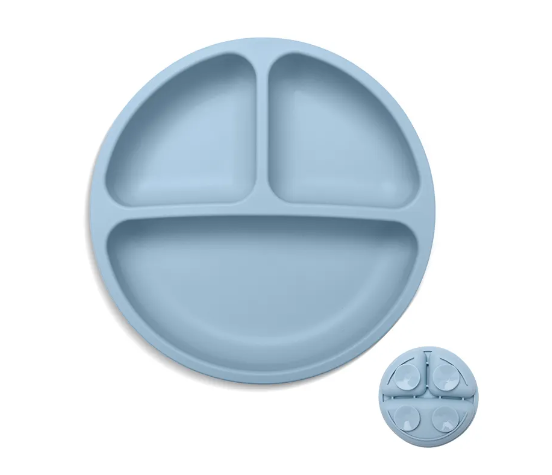Understanding Microwave Safety of Silicone Bowls
Heat Resistance Properties
Silicone bowls are known for their remarkable heat resistance properties, making them ideal for microwave usage. They can endure temperatures ranging from -40°F to 400°F, which broadens their application across various cooking needs. This innate flexibility and durability ensure that silicone maintains its structure even under extreme conditions. According to research, silicone does not leach harmful chemicals when heated, assuring that food cooked in silicone bowls remains safe. Such properties make silicone a preferred choice for consumers prioritizing health alongside convenience in microwave cooking.
FDA & International Certification Standards
When selecting silicone bowls for food use, certification marks like the FDA approval are crucial indicators of safety. FDA certification assures consumers that the silicone used is food-grade, meeting stringent safety guidelines for food contact. Furthermore, international bodies like the European Food Safety Authority (EFSA) also endorse silicone products, providing confidence in their global safety standards. It's pivotal for consumers to examine these certifications to verify compliance with health and safety regulations before purchasing silicone kitchenware.
Testing for Microwave-Safe Compatibility
Ensuring that silicone bowls are microwave-safe involves rigorous testing, focusing on temperature stability and structural integrity. Independent laboratories play a vital role by conducting extensive tests to validate manufacturers' claims about microwave safety. Additionally, consumer insights from product feedback and reports offer practical evidence of how silicone bowls perform during microwave use. These tests and reviews collectively ensure that silicone bowls deliver on their promise of safe and efficient microwave cooking, enhancing user confidence in these products.
Oven Use Guidelines for Silicone Bowls
Temperature Limits and Thermal Stability
Silicone bowls typically have a maximum temperature limit of 400°F, which makes them appropriate for most oven cooking environments. This threshold is crucial because it guarantees that the bowls won't warp or degrade when exposed to high temperatures. Silicone's inherent thermal stability allows it to maintain its flexibility and durability even under the intense heat of an oven. Culinary experts recommend adhering to these temperature limits to ensure that your silicone bowls remain in excellent condition and continue to perform effectively in various baking and roasting applications.
Preheating Best Practices
To ensure the longevity of silicone bowls and maintain food quality, it is essential to preheat the oven gradually. Sudden temperature changes can damage silicone, potentially compromising their durability. By aligning the oven temperature with the recommended cooking time, you improve the safety and quality of the culinary process. Industry best practices advocate for preheating as it contributes to better cooking outcomes while safeguarding silicone utensils. This method not only enhances overall food safety but also minimizes the risk of structural damage to the bowls.
Avoiding Direct Heat Exposure
When using silicone bowls in the oven, it is important to avoid direct heat exposure. These bowls should not be placed directly on stove burners or under broilers, as these areas can produce intense heat that may lead to melting. Observing safety guidelines, such as placing silicone bowls in the center of the oven, can prevent such hazards. Proper placement not only protects the integrity of the silicone material but also extends its lifespan. Following these oven safety guidelines ensures that silicone bowls continue to serve your cooking needs reliably.
By adhering to these guidelines, we can confidently use silicone bowls safely and effectively in both microwaves and ovens, ensuring a seamless cooking experience.
Silicone vs. Other Materials: Microwave and Oven Comparisons
Why Silicone Outperforms Plastic
Silicone bowls offer distinct advantages over conventional plastic bowls, particularly in terms of heat resistance. While plastic can warp or release harmful chemicals when exposed to the high temperatures common in microwaves, silicone maintains its structural integrity. Research highlights that silicone doesn’t retain odors or stain easily, making it a clean and durable option for kitchen use. Additionally, unlike plastic, silicone's flexibility and durability mean it won't crack under pressure, making it a practical choice for diverse cooking and storage needs.
Glass and Ceramic Alternatives: Pros and Cons
Glass and ceramic bowls have their own merits, such as sturdiness and aesthetic appeal, but they lack the flexibility and ease of storage that silicone offers. While they can endure high oven temperatures, they also come with the risk of breaking or chipping, particularly under sudden temperature changes. From a cost perspective, silicone bowls often stand out as a more economical and practical option for daily use. They provide the versatility required for various cooking tasks without the fragility associated with glass and ceramic.
The Risks of Metal in Microwaves
Using metal containers in microwaves is fraught with risks, including potential fires and appliance damage. Metal's reflective properties lead to uneven heating and can even cause sparks. Experts consistently recommend avoiding metals in microwaves to prevent these hazards. Instead, safer materials such as silicone are ideal for microwave use due to their non-reactive nature and ability to handle microwave radiation without issues. This makes silicone a more dependable choice for safe and efficient cooking.
Proper Care for Long-Term Durability
Cleaning and Storage Recommendations
Proper maintenance can significantly extend the life of silicone bowls. While these bowls are dishwasher safe, I recommend hand washing to prevent residue buildup and maintain longevity. To save space, nesting the bowls is advisable; this not only preserves their shape but also makes storage more efficient. It's essential to ensure that the bowls are completely dry before stacking; this will prevent the growth of mold or mildew, which can occur if moisture is trapped.
Identifying Wear and Tear
It's crucial to routinely check silicone bowls for signs of wear and tear. Look for discoloration, cracks, or peeling, which are indicators that it might be time for a replacement. Experts suggest closely monitoring the lifespan of your silicone products. Prolonged use may affect their effectiveness and safety, potentially leading to food safety issues. Familiarizing yourself with the manufacturer's guidelines concerning the expected life of silicone bowls is a preventive measure that can safeguard against any potential risks.
When to Replace Silicone Bowls
Replacement of silicone bowls is generally recommended every 5 to 10 years, depending on how frequently they are used and how well they are cared for. Factors that indicate the need for replacement include any changes in texture or smell, which might suggest that the material is beginning to degrade. By adhering to these replacement guidelines, you can ensure that your silicone bowls continue to offer safe and effective performance in your kitchen.
FAQ
Are all silicone bowls microwave safe?
Not all silicone bowls are microwave safe. It's essential to check for microwave safety markings or certifications before use.
How do I know if my silicone bowl is food-grade?
Look for FDA approval or other international certification marks that ensure the silicone is safe for food contact.
Can I use silicone bowls in an oven?
Yes, silicone bowls are oven safe, typically up to temperatures of 400°F.
What should I do if my silicone bowl discolors?
Discoloration can be a sign of wear, and you should consider replacing the bowl if it shows signs of damage, like cracks or peeling.


